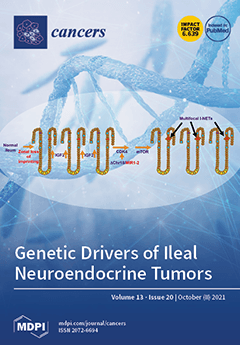Retinoblastoma is usually initiated by biallelic
RB1 gene inactivation. In addition,
MYCN copy number alterations also contribute to RB pathogenesis. However,
MYCN expression, its role in disease progression and correlation with RB histological risk factors are not well understood. We studied the expression
[...] Read more.
Retinoblastoma is usually initiated by biallelic
RB1 gene inactivation. In addition,
MYCN copy number alterations also contribute to RB pathogenesis. However,
MYCN expression, its role in disease progression and correlation with RB histological risk factors are not well understood. We studied the expression of
MYCN in enucleated RB patient specimens by immunohistochemistry.
MYCN is overexpressed in RB compared to control retina. Our microarray gene expression analysis followed by qRT-PCR validation revealed that genes involved in glucose metabolism and migration are significantly downregulated in
MYCN knockdown cells. Further, targeting
MYCN in RB cells using small molecule compounds or shRNAs led to decreased cell survival and migration, increased apoptosis and cell cycle arrest, suggesting that
MYCN inhibition can be a potential therapeutic strategy. We also noted that
MYCN inhibition results in reduction in glucose uptake, lactate production, ROS levels and gelatinolytic activity of active-MMP9, explaining a possible mechanism of
MYCN in RB. Taking clues from our findings, we tested a combination treatment of RB cells with carboplatin and
MYCN inhibitors to find enhanced therapeutic efficacy compared to single drug treatment. Thus,
MYCN inhibition can be a potential therapeutic strategy in combination with existing chemotherapy drugs to restrict tumor cell growth in RB.
Full article






